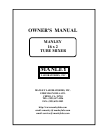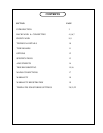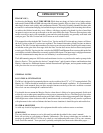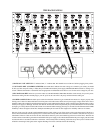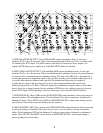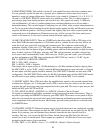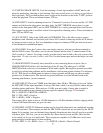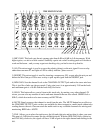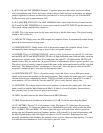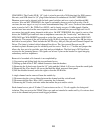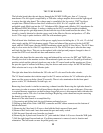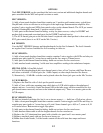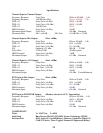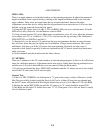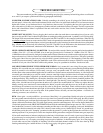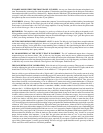9
8) AUX. Only on LINE VERSION channels. A separate mono mix that can be used as an effects
send or headphone send. These are factory wired to be post fader and post cut but there are internal
jumpers right next to the aux pot that allow pre fade aux or even post fade, pre cut. Like the MIX
GAIN pots unity gain is approximately 2:00
9) AUX MASTER, EXT GAIN. On LINE VERSIONS this control is the final level control for the
AUX send. On MIC VERSIONS it is a stereo gain control for the EXT INPUTS into the stereo mix.
The typical setting would be fully clockwise.
10) MIX. This is the master gain for the stereo mix before it hits the tube stages. The typical setting
would be fully clockwise.
11) MIX MUTE. Simply mutes the MIX outputs for complete silence. It automatically mutes during
power up or down to prevent huge pops.
12) MONITOR MUTE. Simply mutes all 4 of the monitor outputs for complete silence. It also
automatically mutes during power up or down to prevent speaker damage.
13) POWER. This is a LOCKING TOGGLE - pull to switch. Upon power up, the left VU will light
and the MIX MUTE and MONITOR MUTE leds will light indicating mute while the tubes warm up
and the power supplies settle. About 20 seconds later, the right VU will light and the MUTES will
unmute (unless they are pushed in). At power-off there is instantaenous mute to protect speakers, etc.
The power switch is actually a remote control that turns on the main transformer for all the volts that
mixer uses. The "Phantom Power" transformer is "always-on" unless the power switch at the IEC
receptical is turned off and is used also for that remote control.
14) MONITOR SELECT. This is a 5 position rotary switch that allows several different console
signals to be sent to the speakers via the monitor outputs. This includes the main stereo mix, a mono
version of the mix for compatibility checks, TAPE for playback of the mix from a DAT or other 2
track machine, AUX to check the Aux mix and EXT just to verify that this input is fine.
15) MONITOR. The volume knob for the stereo speakers, via the monitor output jacks. The same
knob is used for both the Main Monitor and Mini's. If there is a level discrepancy between them,
then you may have to turn down one pair of power amps.
16) MINI. Switches between the Main Monitors and MINI Monitors.
17) DIM. Drops the level of either set of monitors by 15 dB. Useful for answering the phone.
18) VU METERS. The top VU is left, bottom is right. The bottom VU lights once the power-up
delay has happened. VU meters are almost always calibrated for pro levels which means that Zero
VU = +4dBm (1.228 volts RMS). VU meters generally agree with each other which is great for
analog tape and estimating percieved loudness but they will generally be in total disagreement with
the kind of peak meters used with digital recorders or A to D converters. Peak meters are not
generally standardized but should be the primary meters you use when recording digitally. You have
to watch the record machine or A to D converter to prevent "overs".



